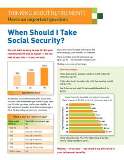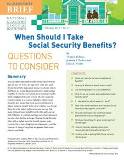Kristen Arnold, Income Security Program Analyst, NASI
The National Academy of Social Insurance joins nearly 1,700 organizations nationwide during America Saves Week, by highlighting its public education campaign to help Americans boost their financial security in retirement
Social Security benefits are a key source of income in retirement for Americans of all races and ages. Nearly 90 percent of married couples and unmarried persons age 65 and older receive benefits. Close to two-thirds of those beneficiaries rely on Social Security for half or more of their total income, and about a third get all or almost all (90 percent or more) of their income from Social Security.[i] For economically disadvantaged Americans, Social Security is especially important: More than 7 in 10 Hispanics, African Americans, and unmarried women of all races rely on Social Security for half or more of their income, and more than 4 in 10 African Americans, Asians, and Hispanics– and unmarried men and women of all races – rely on it for all or almost all of their income.[ii]
So when you’re thinking about retirement, you need to know that Social Security is a valuable asset that you can’t outlive. Just as important, knowing when to claim benefits can have a big impact on how much you’ll get.
The National Academy of Social Insurance joins nearly 1,700 organizations nationwide during America Saves Week, February 23-28, by highlighting our public education campaign to help Americans boost their financial security in retirement. Our focus is on educating workers on when to claim Social Security benefits. The Academy has partnered with the National Women’s Law Center, National Urban League, and National Council of La Raza to develop practical resources to help you determine your own best Social Security retirement plan. Our pre-retiree toolkit, When to Take Social Security: It Pays to Wait, includes a brief, fact sheet, and videos that explain how waiting to take Social Security retirement benefits, if you can, will increase your monthly benefit by as much as 76 percent. Key messages include:
- If you need Social Security to make ends meet, take it – you’ve earned it.
- But if you can wait, even a year or two, your monthly benefit will be higher – for the rest of your life.
- If you’re married, you have two lives to plan for – and chances are, either you or your spouse will live past age 85. If you are the higher earner, waiting to take Social Security means providing a higher survivor benefit for your spouse if she or he outlives you.
NASI’s Resources:
|
A 3-minute video: Social Security: It Pays to Wait. Also available in Spanish. Seguro Social: Vale la pena esperar |

A 1-page fact sheet: When Should I Take Social Security?
|

A 16-page brief: When Should I Take Social Security? Questions to Consider |
The National Women’s Law Center’s fact sheet series includes key details about Social Security claiming and the impact on you as a worker and/or surviving spouse, as well as on using retirement savings to supplement your monthly Social Security benefit. The National Council of La Raza and National Urban League each have their own resources on when to take Social Security, explaining its importance to Hispanics and African Americans and how benefits can help multigenerational households.
Only 18 percent of workers say they feel very confident about having enough money for a comfortable retirement.[iii] Although meeting immediate financial obligations can make it hard to save for long-term goals, that’s where financial literacy and preparedness come in. If you’re like most Americans, Social Security will be your single biggest retirement asset. So as you assess your financial health during America Saves Week, be sure to include Social Security benefits – and when to claim them – in your long-term financial planning.
[i] Income of the Population 55 or Older, 2012. Washington, DC: Social Security Administration, Office of Research, Evaluation, and Statistics. Tables 2.A1 and 9.A1.
[ii] Income of the Population 55 or Older, 2012. Washington, DC: Social Security Administration, Office of Research, Evaluation, and Statistics, Tables 9.A2 and 9.A3; “Further breakdown of table 9.A1.” Unpublished data, received March 12, 2013. Washington, DC: Social Security Administration, Office of Research, Evaluation, and Statistics.


